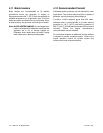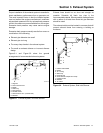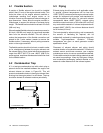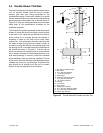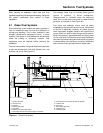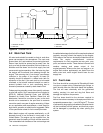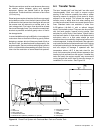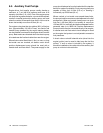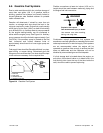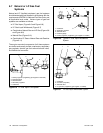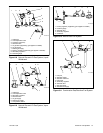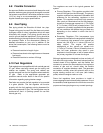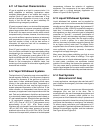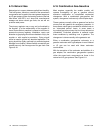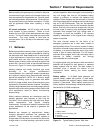TP-5700 7/9328 Section 6 Fuel Systems
6.5 Auxiliary Fuel Pumps
Engine-driven fuel transfer pumps usually develop a
maximum of 7 psi (48 kPa) pressure and have a lift
capacity of 4-6 feet(1.2-1.8 m). Even if the engine pump
can draw fuel a greater distance, a more reliable system
results if a transfer tank and/or auxiliary pump are used
when the vertical lift exceeds three feet or fuel must be
drawn horizontally more than 20 feet (6.1 m).
On engines using less than ten gallons (38 L) of fuel per
hour (approximately 100 kW or less), an electric fuel
transfer pump powered by the engine starting battery
can be installed in series with the engine-driven transfer
pump. Best results are obtained when the electric pump
is located near the fuel tank rather than near the engine.
Where fuel must be lifted 6 feet (1.8 m) or more, or long
horizontal runs are involved, an electric motor driven
positive displacement pump should be used with a
transfer tank and float switch. The power supply for the
pump shouldalways be fromthe load sideof thetransfer
switch for maximum reliability. Such pumps typically are
capable of lifting fuel 18 feet (5.5 m) or drawing it
horizontally up to 200 feet (61 m).
Where vertical or horizontal runs exceed these limits,
the pumpshould be remotemounted adjacentto the fuel
storage tank. When so located, these pumps can push
fuel over 1,000 feet (305 m) horizontally or more than
100 feet (30.5 m) vertically and deliver adequate fuel for
generator sets up to 2800 kW. Positive displacement
pumps should never beconnected directly to an engine;
a transfer tank and float switch should always be used
so the engine fuel system is not subjected to excessive
fuel pressures.
A check valve or shutoff solenoid valve (wired into the
engine ignition) can be used to help keep the fuel line
primed. If such a valve is included in the system, it
should be installed on the outlet side of the auxiliary fuel
pump to minimize inlet restriction.



